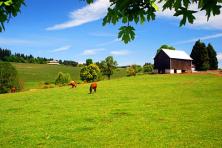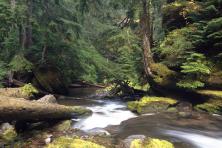Outside of humans, beavers have more impact on landscapes than virtually any other species. Building dams and changing streams, they well deserve their busy reputation. Now a new study reveals those hardworking animals not only build dams but biocarbon storage as well.
Ellen Wohl of Colorado State University reports her findings in an article accepted for Geophysical Research Letters, “Landscape-scale carbon storage associated with Beaver Dams.”
Laurence Pope of New Scientist summarizes the findings:
“Beaver dams cause water to breach riverbanks, creating areas of wetland known as beaver meadows, which contain large amounts of sediment and organic material. If the dam breaks the meadows dry out, exposing the material to the air and releasing some of the carbon stored within them.
“Using previously published carbon-content values, Wohl estimated the total organic content from dried-up beaver meadows in 27 drainage basins in Rocky Mountain National Park, and found it accounted for 8 per cent of the carbon in the landscape. She estimated that when the meadows were flooded they may have sequestered as much as 23 per cent of the carbon.”
This opens intriguing possibilities for improving natural carbon storage by restoring beaver populations.
“Beaver numbers have been declining in the park since the 1940s,” Pope reports. “Wohl says there were once between 60 and 400 million beavers in North America . . . There are now thought to be 6 to 12 million, and the park service is working towards reintroduction.”
Beavers are an important biocarbon ally. Bring them back!





